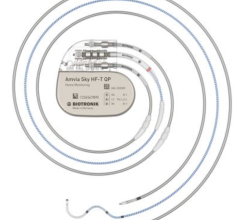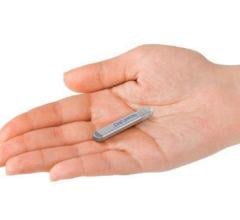
July 16, 2015 - Medtronic plc announced the first in-office implant of its miniaturized cardiac monitor as part of the Medtronic Reveal LINQ In-Office 2 (RIO 2) Study. One of the world's smallest cardiac monitors, the Reveal LINQ insertable cardiac monitor (ICM) was successfully implanted in an office setting at Scripps Clinic in La Jolla, California, by cardiologist John Rogers, M.D. The RIO 2 study will determine if the procedure, performed in an in-office setting, is as safe as procedures performed in a traditional hospital setting - such as an operating room, cardiac catheterization laboratory or electrophysiology laboratory.
"Studies such as RIO 2 may enable physicians to provide their patients with even greater access to the latest diagnostic tools and therapies," said Rogers. "In-office procedures have the potential to help patients and reduce costs to the healthcare system."
RIO 2 is enrolling approximately 540 patients in 30 centers across the United States in a two-arm, prospective, un-blinded study in which patients will be randomized 1:1 to either receive the Reveal LINQ ICM in an office setting or in a traditional hospital setting. Patients will be followed for approximately three months and evaluated for procedure and device-related complications, and also for procedure time and resources required to perform the procedure.
The RIO 2 study also is enrolling approximately 150 patients in 15 centers across Europe, Australia and Canada. This observational study will examine clinical evidence to support moving the LINQ insertion procedure from the traditional hospital setting to new locations within the hospital, or "out-of-lab."
Cleared by the U.S. Food and Drug Administration (FDA) in 2014, the Reveal LINQ ICM system is the newest generation of ICM and the smallest cardiac monitor available (~1 cc, or one-third the size of a AAA battery). The device is placed under the skin of the chest using a minimally invasive insertion procedure and allows physicians to continuously and wirelessly monitor a patient's heart through the Carelink Network for up to three years. Common uses include monitoring syncope (fainting) patients for potential episodes of bradycardia (slow heartbeat), monitoring patients who have had cryptogenic strokes (strokes of unknown cause) for possible episodes of atrial fibrillation, and monitoring patients suffering from intermittent chest palpitations for potential episodes of atrial or ventricular arrhythmias.
For more information: www.medtronic.com


 July 11, 2024
July 11, 2024 








